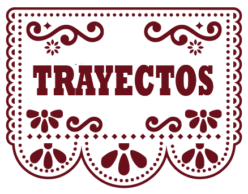 Los comparativos y superlativos: Uso y forma
Los comparativos y superlativos: Uso y forma
Rachel y Juan
As the first week of the spring semester is over, Rachel, Amy’s housemate, bumps into her friend Juan. Toman el autobús juntos y hablan de sus clases. Listen to their conversation, and pay attention to the way in which they compare their classes.
Rachel: Juan: Rachel: Juan: Rachel: Juan:
¿Comprendiste?
1. First, we’re going to discover what you understood from the conversation
- Which class is the most difficult for Juan? Why?
- ¿Qué dos clases le gustan a Rachel?
- ¿Quién tiene las clases más difíciles?
- ¿Cuál es probablemente la especialización de Amy?
2. Now let’s focus on the structures used in the dialogue. What do you think is the difference (in degrees of similarity, more, or less) between these sentences? What are tan, más, and menos followed by?
- “la clase de español es tan fácil como la clase de anatomía”
- “Las clases de Amy son más difíciles que nuestras clases.”
- “El español es definitivamente menos complicado que la física.”
Now let’s learn more about these structures.
I. Los comparativos
Let’s start by focusing on how Rachel talks about Juan’s and Amy’s classes in the following sentence:
“Ella tiene más clases que tú.”
In this statement, Rachel is comparing the number of classes that Juan and Amy are taking, and she is saying that Amy has more classes than Juan. This is a comparison, and, in order to express it, we use a comparative o comparativo en español. We use comparativos to compare quantities (as in the example), qualities (when we try to establish the similarities and differences between two things), and frequency (when we compare two actions). Hay tres tipos de comparativos en español: superioridad (>), inferioridad (<) e igualdad (=). Let’s go through each of them and learn more about their uses.
A. Superioridad (>). To say that something is more than something else, you will use más and que.
For qualities and quantities, you will compare the two subjects using:
Más + noun/adjective/adverb + que
Ella tiene más clases que tú. (noun)
La clase de español es más difícil que la clase de anatomía. (adjective)
Amy estudia más frecuentemente que Juan. (adverb)
For frequency or intensity, you will use:
Verb + más + que
Amy estudia más que Juan.
![]() ¡Ojo!
¡Ojo!
Spanish has two irregular forms to express “better than” and “less than”.
- When you want to express “…better than…” instead of saying “más bien” or “más bueno,” which are incorrect in Standard Spanish, you will use mejor.
Mi hermana habla francés mejor que yo.
El equipo de fútbol femenino de los Estados Unidos es mejor que el equipo de Argentina.
- When you want to express “…worse than…” instead of saying “más malo” or “más mal,” which are incorrect in Standard Spanish, you will use peor.
Mi hermano habla inglés peor que yo.
La contaminación de los mares es peor que la falta de petróleo (lack of oil).
B. Inferioridad (<). To say that something is less than something else, you will use menos and que. For qualities and quantities, you will compare the two subjects using:
menos + noun/adjective/adverb + que
Juan tiene menos clases que Amy. (noun)
La clase de anatomía es menos difícil que la clase de español. (adjective)
Juan estudia menos frecuentemente que Rachel. (adverb)
For frequency or intensity, you will use:
Verb + menos + que
Juan estudia menos que Amy.
C. Igualdad (=). To say that something is the same as something else, you will use tan/tanto/tanta/ tantos/tantas and como. This structure is a bit more complex, so let’s pay attention to the differences that exist when we use it with adjectives and adverbs or nouns.
- With adjectives and adverbs, you will use
tan + adjective or adverb + como
La clase de español es tan fácil como la clase de anatomía. (adjective) Rachel estudia tan frecuentemente como Amy. (adverb)
- When you use this structure with nouns, you will need to choose the form that matches the number (singular or plural) and gender (feminine or masculine) of the noun it modifies. Have a look at these examples, and try to come up with a simplified rule.
Tengo tanto trabajo como tú.
Tengo tanta tarea como Juan.
Amy necesita tantos libros como su amiga Claire.
Rachel toma tantas clases como Juan.
| tanto | + | noun (masculine, singular) | + | como |
| tanta | noun (feminine, singular) | |||
| tantos | noun (masculine, plural) | |||
| tantas | noun (feminine, plural) |
- With verbs, whether they are singular or plural, you will use:
verb + tanto como
Rachel estudia tanto como Amy.
¿Comprendiste? Ahora que aprendemos los comparativos, respondemos las siguientes preguntas sobre la conversación entre Rachel y Juan.
- Rachel tiene ______ clases como Juan.
- Amy tiene ______ clases que Juan.
- Rachel estudia ______ como Amy.
- La física es _________ complicada que el español.
- La anatomía es _________ fácil como el español.
- Rachel toma el autobús _______ como Juan.
Now that we have a better understanding of comparatives, it’s time to learn about superlatives!
II. El superlativo
Let’s start by focusing on how Juan talks about his Spanish grammar class in the following sentence:
“La clase de gramática española con el profesor Robles es la más difícil de todas.”
In this statement, Juan is comparing his Spanish grammar class to the rest of his classes (i.e, to a group). In order to do so, he is using a superlative (en español, un superlativo). We use it to express the highest quality or degree of a thing, person, action, etc.
To express the most/ least, you use the following equation. Notice that the definite article is needed, and, therefore, it has to agree in number and gender with the noun it modifies.
el/la/los/las + (noun) + más/menos + adjective + de
La clase de gramática española es la (clase) más difícil de todas mis clases. El autobús es la forma de transporte menos cara de la ciudad.
![]() ¡Ojo!
¡Ojo!
When you want to talk about the best or worst, we do not use “más” or “menos”. Instead, we use “mejor” and “peor,” and you modify their form to match the number of the noun they modify. Have a look at the following examples:
- For best:
El/la/los/las + mejor / mejores + noun + de
El español es la mejor materia de mi semestre.
Rachel y Amy son las mejores amigas de Juan.
El instructor Robles es el mejor profesor de español.
Esta universidad tiene los mejores estudiantes de Tejas.
- For worst:
El/la/los/las + peor / peores + noun + de
La trigonometría es la peor materia de mi semestre.
Las tareas de mis clases este semestre son las peores tareas de mi carrera de estudiante.
Este restaurante tiene el peor servicio de la ciudad.
El cambio climático y la contaminación son los peores problemas del mundo actual.
Now it’s time to use our new structures. Es hora de Actividad 1-16. ¿Cómo son? Now let’s learn more about Amy, Rachel, Sara, and Juan. Lee las descripciones a continuación, and then fill in the blanks. Juan: Tiene 21 años y mide 6 pies. Es de McAllen, Tejas y vive solo. Está en su tercer año de universidad y estudia español y educación. Es atlético y nada muy bien. Tiene una camioneta (pick-up truck) muy grande. Es súper tímido, pero le gusta salir con sus amigos. Rachel: Tiene 20 años y mide 5 pies y 4 pulgadas. Es de Tucson, Arizona y vive con Amy y Allison. Ellas viven en un apartamento muy grande, pero su cuarto es el más pequeño. Está en su segundo año de universidad y estudia lingüística. Rachel es extrovertida y le gusta tomar el sol. Es atlética y le gusta cocinar. Amy: Tiene 20 años y mide 5 pies y 6 pulgadas. Es de Denver, Colorado y vive con Rachel y Allison. Ellas viven en un apartamento muy grande y su cuarto es muy grande también. Amy está en su tercer año de universidad y estudia matemática. Es un poco introvertida y le gusta ir de paseo con su perro. Es cautelosa y no le gusta ir a las discotecas. Sara: Tiene 18 años y mide 5 pies y 4 pulgadas. Es de Argentina y vive con su familia. Ella vive con 4 personas. Está en su primer año de universidad y estudia educación. Es graciosa y le gusta acampar y hacer fogatas. Es atlética y no le gusta perder. I. Antes de escuchar Escribe una lista de cinco actividades que te gusta hacer. Organiza tus actividades en orden del uno al cinco, donde el 1 es la actividad que más te gusta. Usa el vocabulario de los pasatiempos y actividades si necesitas ayuda. II. A escuchar Escucha la descripción de los pasatiempos y actividades de Juan y chequea si tú y él tienen cosas en común. III. Después de escuchar A. ¿Tienen tú y Juan actividades en común? ¿Cuáles? ¿Qué actividades les gustan a Uds. dos? B. Comprendiste: Vuelve a escuchar el audio y responde las siguientes preguntas sobre Juan: Actividad 1-18. Mis actividades diarias favoritas. Paso 1. Describe your daily activities using at least three comparative and three superlative forms. Use Juan’s audio in Actividad 1-17 as an example. To do this activity, you will need to prepare some statements using the superlatives and comparatives to guide your conversation. Paso 1. Describe 3 relationships between you and your close friends. You will need to use the comparatives and superlatives. Paso 2. Describe tus pasatiempos. Responde estas preguntas. ¿Qué actividades te gustan más? ¿Qué actividades te gustan menos? ¿Qué actividades son más o menos interesantes? ¿Qué otras actividades te gusta hacer? You will need to use the comparatives and superlatives, and the vocabulary and structures you learned in Hablemos más from this module. Estudiante 1. You are beginning your Spring semester, and you are getting to know one of your new classmates. Estudiante 2. You meet a new classmate in one of your spring semester’s classes.![]() ¡Manos a la obra!
¡Manos a la obra!
![]() Actividad 1-17. Los pasatiempos de Juan.
Actividad 1-17. Los pasatiempos de Juan.
![]() Paso 2. Now get together with a classmate and compare your paragraph to his/hers. What do you guys have in common? What is different? ¿Qué actividades les gustan a los dos?
Paso 2. Now get together with a classmate and compare your paragraph to his/hers. What do you guys have in common? What is different? ¿Qué actividades les gustan a los dos?
![]() Actividad 1-19: Mis amigos y pasatiempos
Actividad 1-19: Mis amigos y pasatiempos
![]() Conversemos. With a classmate, prepare a conversation. Use the information in Actividades 1-18 and 1-19.
Conversemos. With a classmate, prepare a conversation. Use the information in Actividades 1-18 and 1-19.
Click on the following button to continue using your new structures and vocabulary.
Now it’s time to learn more about Hispanic/Latinx cultural contributions. Vamos a:


